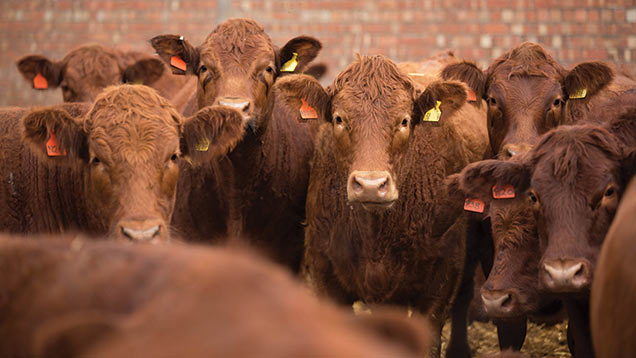Four steps to ensure suckler cow profitability
 © Tim Scrivener
© Tim Scrivener Twin targets of beef farm profitability and greenhouse gas mitigation can be met if farms do four basic things well, according to a leading Scottish beef expert.
Any step taken to improve efficiency on a beef farm is a win-win for emissions, Dr Jimmy Hyslop, SAC consulting beef specialist, told a recent conference dealing with ruminant animals and climate change.
See also: Secrets to achieving top 1% performance
Four ways to fine-tune your herd
1. One calf a cow a year
- Manage BCS
- Sound, fertile bulls
- Heifers conceive and meet target weights
- Keep animal health
- Few complicated calvings
2. Herd health
- Find what your herd health problems are and sort them.
3. Net feed efficiency (NFE) residual feed intake (RFI)
- Breed to improve NFE
- This improves efficiency and cuts GHG/kg red meat produced
4. Efficiency in feeding systems (liveweight gain/kg of DM)
| Slaughter age (months) | Liveweight gain/kg of DM (kg) |
| 12 | 5-7 |
| 18 | 12 |
| 24 | 16 |
| 30 | 20 |
“Efficiency is the route to both improvements in profit and cutting greenhouse gases,” said Dr Hyslop, addressing the ruminomics conference in Edinburgh.
“If a beef system is to have any profitability at all, it has to produce one calf a cow a year – here fertility is key.”
He added that net feed efficiency, also known as residual feed intake, can be used as a strategy to improve efficiency and cut greenhouse gas emissions.
“We can breed animals to improve the efficiency with which they convert feed into saleable product, which improves profit and cuts greenhouse gas emission per kilogramme of meat produced as well.”
